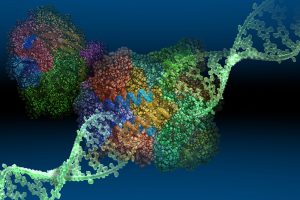BRCA1 Mutation Associated With Higher Risk for Deadly Uterine Cancer

Women who carry the BRCA1 mutation, which increases the risk of breast and ovarian cancers, are also at a higher risk for a lethal form of uterine cancer, according to a study led by a Duke Cancer Institute (DCI) researcher.
This newly defined risk—the first to show a conclusive link between the BRCA1 mutation and the small but significant likelihood of developing an aggressive uterine cancer—could become a consideration in weighing treatment options.
Currently, women with the BRCA1 mutation often undergo double mastectomy as a preventive measure, as well as salpingectomy and oophorectomy, based on studies showing that the gene mutation elevates their risk of cancers of the breast, fallopian tubes, and ovaries. However, conflicting evidence has created controversy over the need for hysterectomy.
“Our study presents the strongest evidence to date that women with this genetic mutation should at least discuss with their doctors the option of having a hysterectomy along with removal of their ovaries and fallopian tubes,” says lead author Noah D. Kauff, MD, director of the Clinical Cancer Genetics Program at the DCI.
In the current study, published online in June 2016 in JAMA Oncology, Kauff and colleagues from 9 other institutions in the United States and United Kingdom analyzed data from 1,083 women. All had BRCA1 or BRCA2 genetic mutations, had undergone removal of their ovaries and fallopian tubes, and were followed for a median of 5.1 years.
Among the BRCA-positive women, 8 uterine cancers were reported within the study period—a rate that was slightly higher but not statistically different than the national average.
Of those 8 cancers, however, 5 were serous endometrial carcinoma, an aggressive, rare subtype. All but one of the serous endometrial carcinomas occurred in women with the BRCA1 mutation (1 occurred in a patient with the BRCA2 mutation).
“We were surprised when we saw the data,” Kauff says. “This is an event that should not occur in the over 600 women with BRCA1 mutations in our study. Even if we followed these women for 25 years, you would expect to see no more than 1 serous cancer.”
Kauff says the findings are important because serous endometrial carcinoma has a mortality rate of 50% and is preventable in women already undergoing salpingectomy and oophorectomy.
“Our findings suggest that it may be important for women with BRCA1 mutations to consider removing their uterus at the time they are considering removing their ovaries and fallopian tubes, unless they are hoping to still have children using assisted reproductive methods or have other medical reasons,” he says.
For women with BRCA1 mutations who have already undergone salpingectomy and oophorectomy, Kauff cautions that the findings are less clear.
“We need additional studies to address whether a 25-year risk of serous uterine cancer of 2.6% to 4.7% justifies the costs and potential complications of a second surgery,” Kauff says.